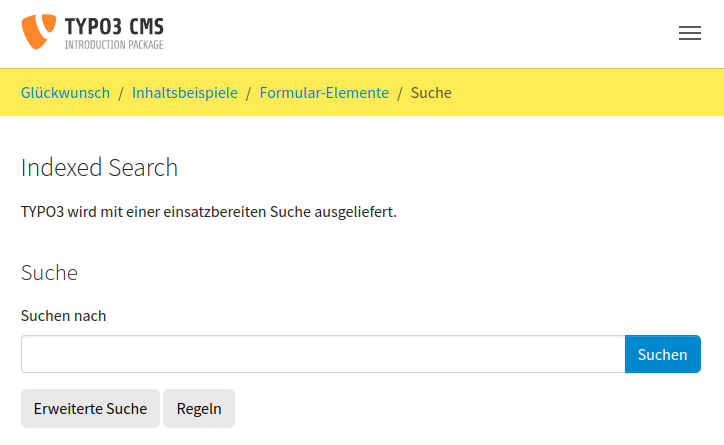Localized labels
Using XLF labels in TypoScript structures
XLIFF (XLF) files are XML files containing labels that the system can retrieve in a localized version if the appropriate translations are installed. It is possible to retrieve values from XLF files using TypoScript:
page.20 = TEXT
page.20.data = LLL:EXT:indexed_search/Resources/Private/Language/locallang.xlf:form.submitThis looks for the label form. in the file
Resources/ from the extension
"indexed_search".
If the frontend is now accessed in the language "de", the German language
is configured in the site configuration and the German
translations are installed in getLabelsPath()/de/,
the output should be "Suche" (instead "Search" which is what you will get if the
label is retrieved for the default language).
Using XLF labels in frontend plugins
Making your code ready for internationalization is covered in Localization and basics about XLIFF files are found in XLIFF Format ("TYPO3 Explained"). Properly made plugins should use XLIFF files for every label that they used, so that they can be translated and thus generate a proper output when a specific language is requested.
For instance, if the page is accessed in the language "de" and the German translations are installed, you will see this page for "indexed search":

Output from the Indexed Search plugin in German
Overriding an existing translation is possible using custom XLIFF files. This process is described in Custom translations.
It is also possible to override a label using TypoScript. See the TypoScript Reference for more information.
You can also create XLIFF files for a language into which TYPO3 is not translated yet. This process is described in Custom languages.
